| This page really covers deer and antelope and similar horned and
hoofed animals. There are many and we don't remember the names of them all
after the visits. They have similar enclosures, and several enclosures
contain the same species. Most are at least vulnerable if not endangered,
and some are classed as critical, ie close to extinction in the wild.
Breeding programs seem to be in place for most. | 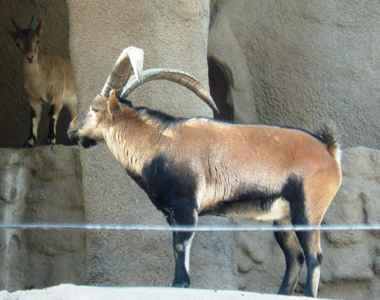 |
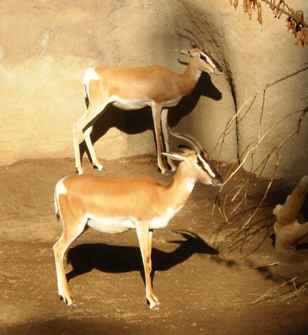 | The sizes also vary
from very small to quite large. These Nubian gazelles are quite small in
comparison to most. |
| There are quite a lot of them of varying ages and so are
obviously one species the zoo has bred successfully. | 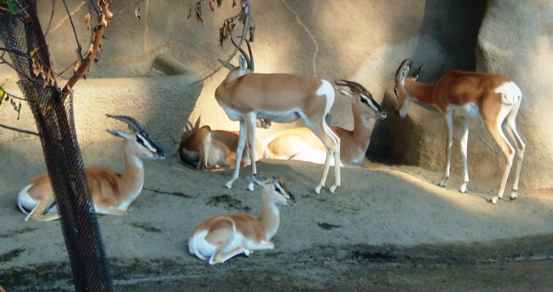 |
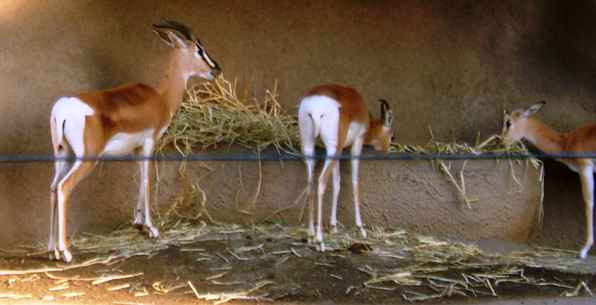 | These look virtually
the same but are labelled Soemmerring's gazelles. The label could be
wrong.... |
| These Bactrian wapiti (also known as Bukharan red deer) are
seriously endangered (almost extinct) since law and order collapsed in their
homeland. The zoo has successfully bred them and now has most of the world's
population. There are plans to reintroduce them into the wild when
conditions permit. | 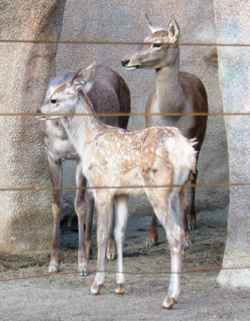 |
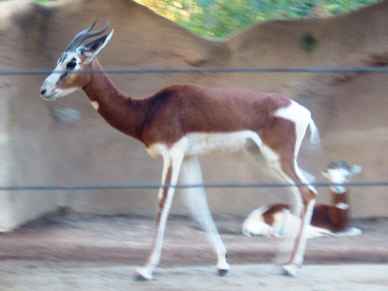 | These are Mhorr's gazelles,
another species the zoo has successfully bred. |
| Slightly different with larger spiral horns. They do all
look very similar but come from different countries and slightly different
genetic makeup. | 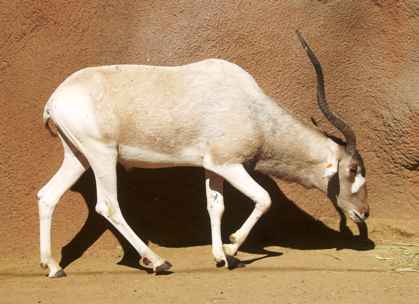 |
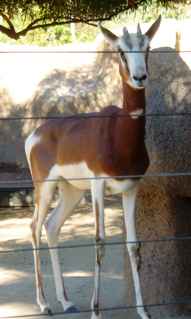 | You end up just
considering that they are beautiful animals (or not) and that it is right to
try to not lose them for future generations to enjoy. |
| Some related animals are of slightly heavier stock but still
belong to the hoofed and horned family. | 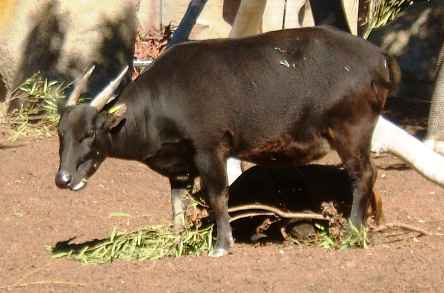 |
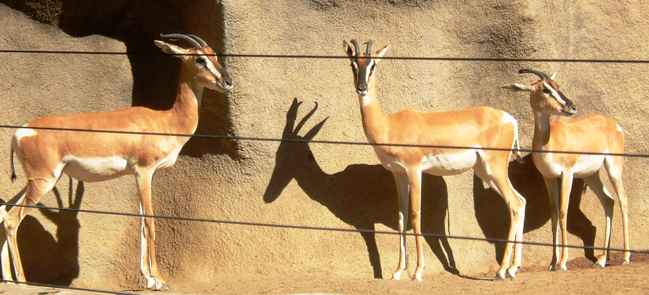 | We took a lot of
photographs on two separate days and some came out better than others. I
swear these are the same as the other lot. |
| These are Calamian deer, another seriously endangered species
which the zoo is successfully breeding. They look rather heavier in the body
than most of the deer and antelope we saw. | 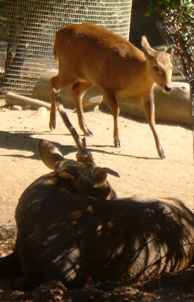 |
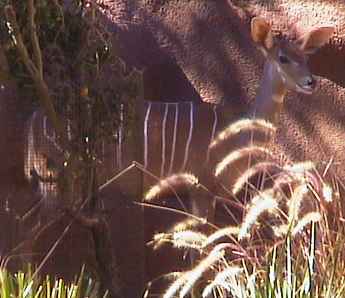 | And this is an East
African bongo. They are very shy, live in dense forest and have almost
perfect camouflage. |
|